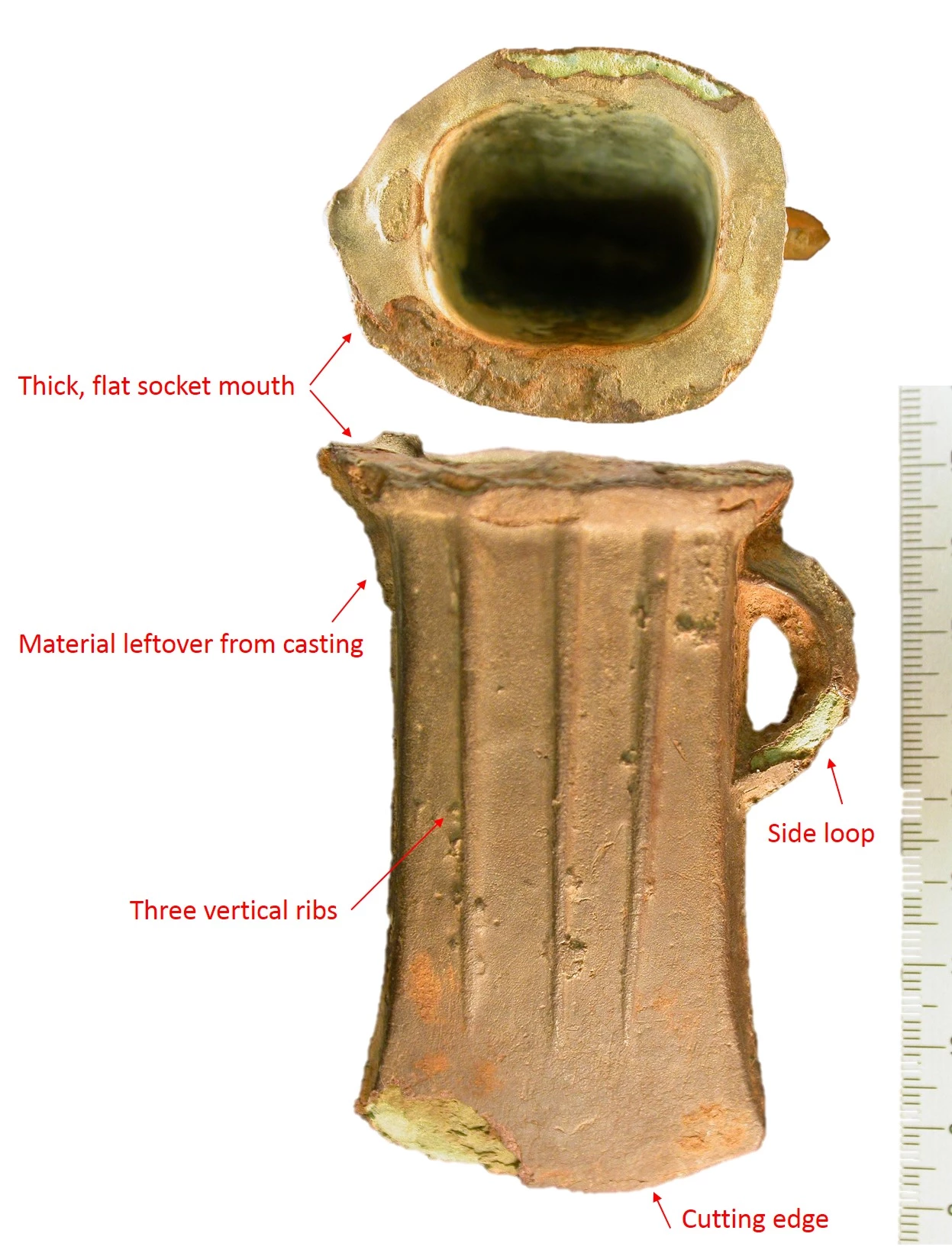Bronze Age South Wales Axes
, 12 September 2017
The Bronze Age is full of different types of objects.
The discovery of metal about 3500 years ago meant new objects could be made or redesigned.
One such object is the axe. For thousands of years people across the world had been making axes out of stone. Bronze Age axeheads were then made out of metal in different shapes and sizes.
By the Late Bronze Age (1100-800 BC), axes were made with sockets, which allowed for the insertion of a wooden haft/handle. Often they had loops to secure the haft with binding, such as leather strips.
In South Wales, a specific form of axe seems to have been very popular and has been named the ‘South Wales axe’.
These axes have thick, flat socket mouths and a loop on one side. They are often heavy and poorly made. There are three raised ‘ribs’ on both faces of the axe. These are sometimes parallel and sometimes converging.
Hundreds of these axes have been found buried in Wales, either on their own or in large hoards of objects. Sometimes they are complete and sometimes they are broken; the reasons for this are uncertain.
An example has recently been found in the Trevithen Hoard, Torfaen, and is currently on display at Pontypool Museum.
South Wales axes have also been found across England, and as far away as northern France.
This implies these products were traded and exchanged over long distances.
The function of these axes is unclear. These axes may have been left in a rough condition because they were used in agricultural activities, such as cutting roots and breaking plough soil.
Whatever the reason they appear to have formed an important part of the Late Bronze Age in South Wales. As more are discovered, archaeologists will continue to gain insights into these objects.



Comments - (1)